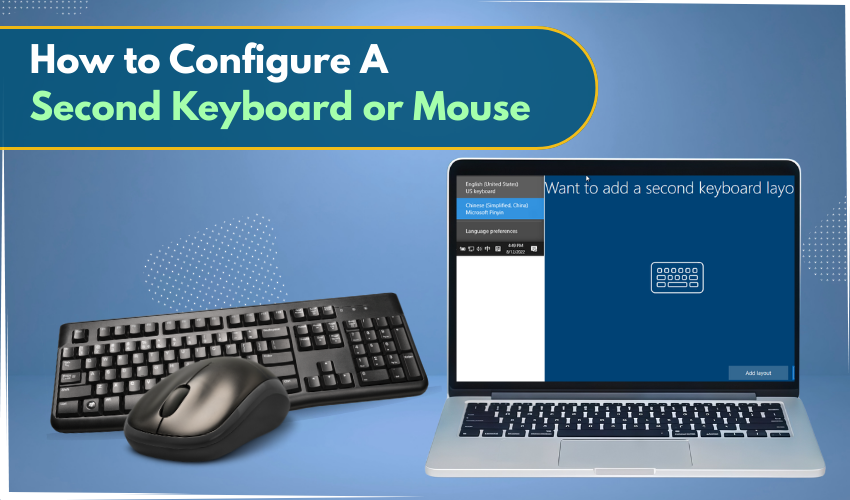How to configure a second keyboard or mouse

How to Configure a Second Keyboard or Mouse
Adding a dual keyboard or a second mouse can make a computer easier to use. Many people need a multiple input setup at home, school, or office. With the right steps, anyone can connect more than one input device and switch between them. This guide explains simple methods for Windows, macOS, and Linux.
Why Use a Dual Keyboard or Second Mouse?
There are several reasons why people use more than one input device. A dual keyboard helps in shared work, teaching, or gaming. A second mouse lets two people control one computer, which is useful in learning spaces. A multiple input setup also supports those who use one keyboard for typing and another for shortcuts.
Method 1: Configure on Windows
Follow these steps to set up:
- Plug in the second mouse or dual keyboard using USB or Bluetooth.
- Windows will detect the new device automatically.
- Check "Device Manager" to see both input devices listed.
- If using Bluetooth, open "Settings" > "Devices" > "Bluetooth" and pair the new keyboard or mouse.
- Test the multiple input setup by moving both mice or typing with both keyboards at once.
Windows supports two or more input devices without special drivers. This means a dual keyboard can type together, and a second mouse can move freely on the screen.
Method 2: Configure on macOS
On a Mac, adding a dual keyboard or second mouse is also simple.
- Connect the USB device or turn on Bluetooth.
- Go to "System Settings" > "Bluetooth."
- Select the device name and click "Connect."
- If asked, confirm the pairing code on the keyboard.
- Test the multiple input setup by checking if both devices respond.
macOS allows a second mouse for shared screen work. Teachers often use this option in classrooms for guiding students.
Method 3: Configure on Linux
Linux gives even more control over a multiple input setup.
- Plug in the device.
- Open a terminal window.
- Type xinput list to see all connected devices.
- Note the ID number of the dual keyboard or second mouse.
- Use xinput enable [ID] to activate it.
Linux users can even assign one keyboard to a program and another to a different program. This makes a dual keyboard setup very flexible.
Tips for a Smooth Multiple Input Setup
- Check cables: Make sure USB ports are working.
- Use a hub: If ports are few, add a USB hub.
- Update drivers: Old drivers may cause errors.
- Pair slowly: With Bluetooth, connect one device at a time.
- Customize settings: Some software lets you assign roles to each device.
When using a dual keyboard, avoid placing them too close or keys may be pressed by mistake. With a second mouse, keep desk space free so both users have enough room.
Practical Uses of a Dual Keyboard or Second Mouse
- Teamwork: Two people can edit text or code together.
- Teaching: A teacher can guide with a second mouse while the student learns.
- Gaming: Some games support a dual keyboard for multiplayer fun.
- Accessibility: People with different needs may use different devices.
- Productivity: A multiple input setup can save time by sharing control.
Final Thoughts
Adding a dual keyboard or second mouse is not hard. Windows, macOS, and Linux all support a multiple input setup with simple steps. With the right method, anyone can connect extra input devices and enjoy more flexible use of a computer. Whether for work, teaching, or play, a dual keyboard and a second mouse make tasks easier to manage.
